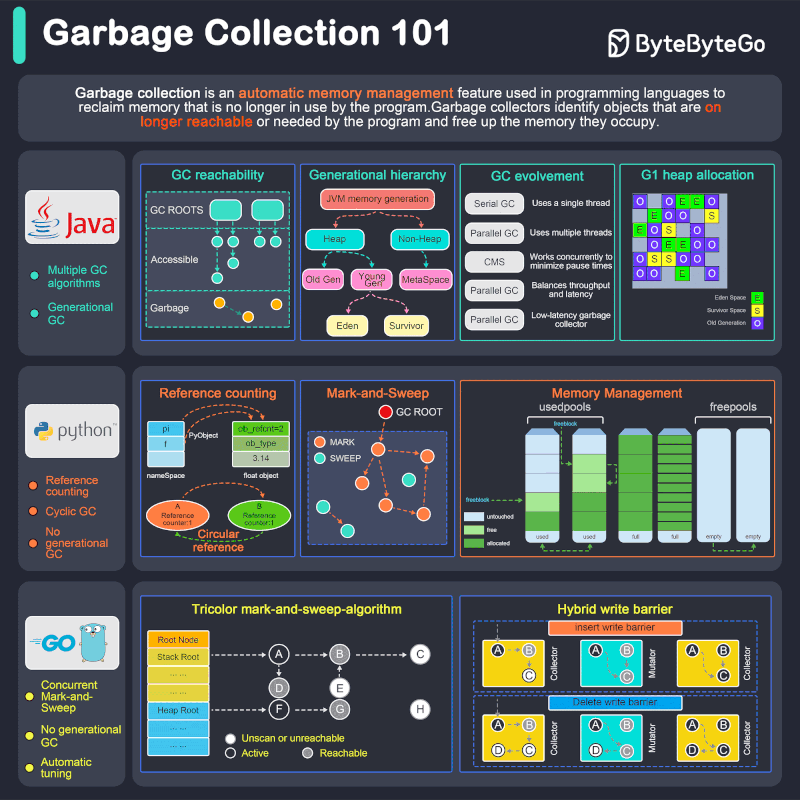
How does Garbage Collection work? Garbage collection is an automatic memory management feature used in programming languages to reclaim memory no longer used by the program.
🔹 Java Java provides several garbage collectors, each suited for different use cases:
\1. Serial Garbage Collector: Best for single-threaded environments or small applications.
\2. Parallel Garbage Collector: Also known as the “Throughput Collector.”
\3. CMS (Concurrent Mark-Sweep) Garbage Collector: Low-latency collector aiming to minimize pause times.
\4. G1 (Garbage-First) Garbage Collector: Aims to balance throughput and latency.
\5. Z Garbage Collector (ZGC): A low-latency garbage collector designed for applications that require large heap sizes and minimal pause times.
🔹 Python Python’s garbage collection is based on reference counting and a cyclic garbage collector:
\1. Reference Counting: Each object has a reference count; when it reaches zero, the memory is freed.
\2. Cyclic Garbage Collector: Handles circular references that can’t be resolved by reference counting.
🔹 GoLang Concurrent Mark-and-Sweep Garbage Collector: Go’s garbage collector operates concurrently with the application, minimizing stop-the-world pauses.